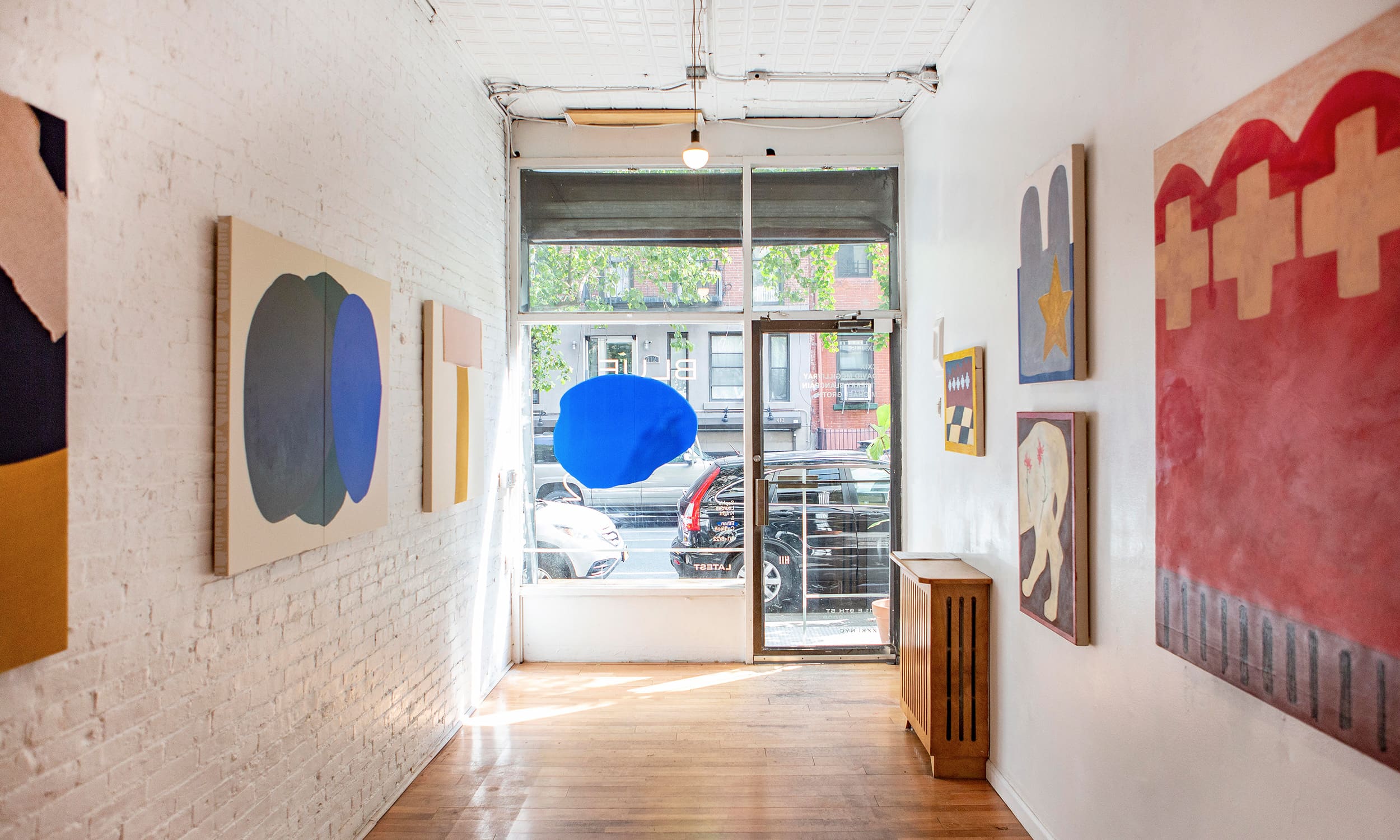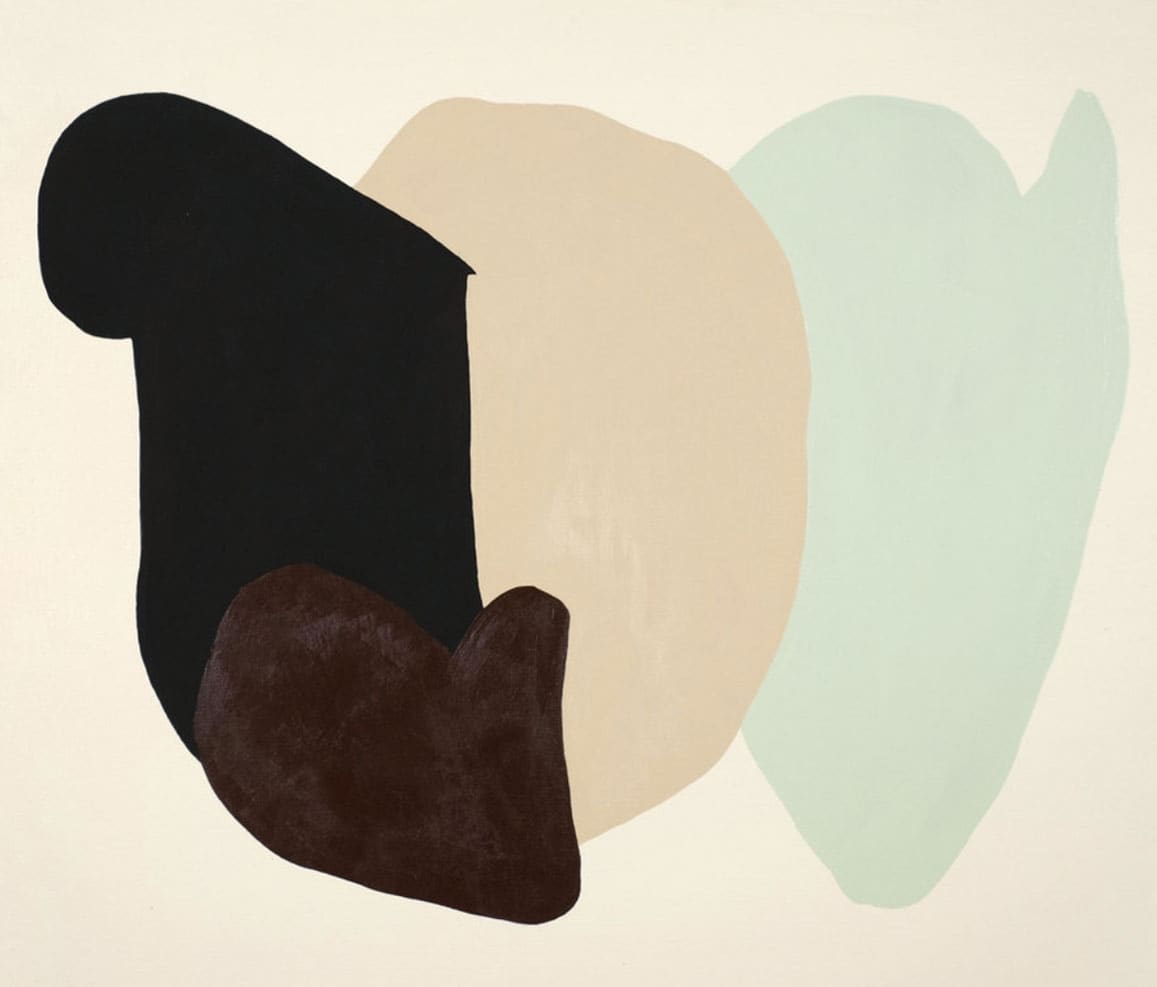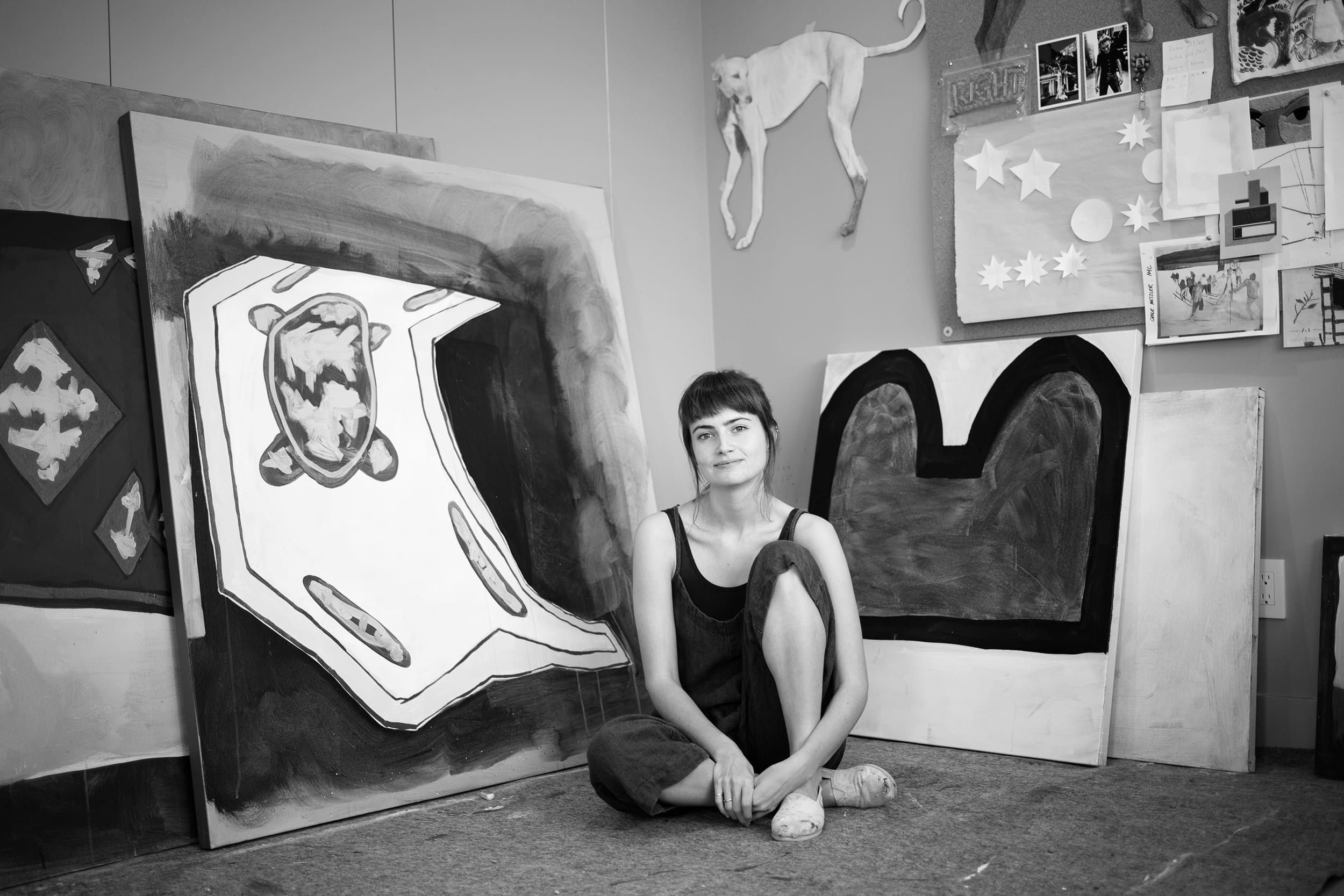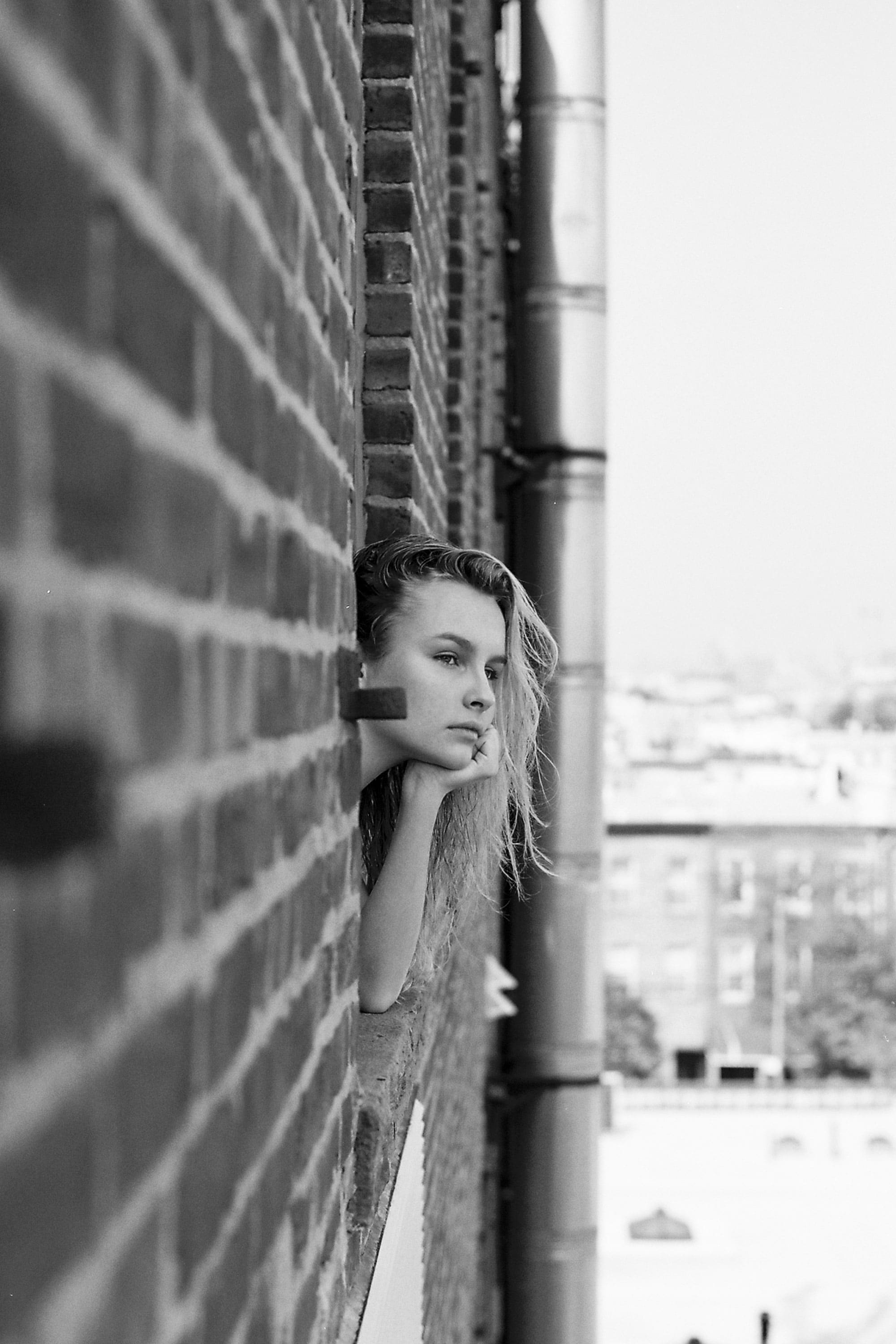Rules Of Attraction
In conversation with artists Sophie Lourdes Knight and Ethan Caflisch
Your identity, your innermost private self, is its own secret world. For many artists, the ability to maintain and communicate one’s self is central to their work. This innate desire can be the root of their artistic exploration. Yet none of us exists within a vacuum and invariably, one’s identity is constantly shifting under the influence of external forces.
Writer, Katerina Furrer, spoke with two artists, Sophie Lourdes Knight and Ethan Caflisch, to explore the nuances of their artistic identities. Beyond their individual practices, the couple also cohabitate and share studio space in close proximity. Below we delve into their practices and the influence they have on each other.
On their path to becoming an artist
Sophie Lourdes Knight: I knew I loved making work but I’ve always been very self-critical and felt uncomfortable claiming to be an artist until I’d passed self-set hurdles… It took me a very long time to even feel comfortable speaking of my art as my main work, I would always be quick to list my day jobs in a weird grasp for validation.
Ethan Caflisch: I was fortunate to have early and consistent exposure to art classes growing up, which I think is pretty rare in public schools these days. From there, I found mentors in my high school art department who helped guide me into art school… If I wasn’t [an artist], I’d probably still be in school studying to become a surgeon.

Spending the Night In a Different Bed XXIX, 2018, Ethan Caflisch

On meeting each-other at art school
Sophie Lourdes Knight: We didn’t have any classes together for a while and I don’t remember seeing much of his work outside of projects he would bring back to the dorms to finish. He was probably the first friend I made there who I knew I could rely on outside school as well as in it. He was very calm and grounding, very sure of himself, smart and determined which is all pretty infectious.
Ethan Caflisch: We initially bonded over other things besides art, and definitely started off as good friends just hanging out and spending a lot of time together after classes. From there, as our relationship grew and we individually progressed as artists, I remember just watching her stretch canvas and paint at home – which was a great painting education for me, just watching and taking mental notes.
On hesitations about dating another artist
Sophie Lourdes Knight: At that point being an artist to me was almost fantasy, I felt like it was going to take so much work and time to get to the point where either of us was one that it wasn’t something I ever thought of. The most important things at that time to me was my work, making solid friendships and mostly just trying to find my footing as an adult.
Ethan Caflisch: I’ve always thought I’d end up with an artist or someone like a lawyer; they’ve either got to really get it or be pretty far removed from the art world.
On drawing boundaries between their personal life and artistic practice
Sophie Lourdes Knight: I think I was pretty secretive with most of my projects until they were done, with anyone, not just Ethan. Thinking back on it I guess there was kind of a natural boundary that formed.
Ethan Caflisch: We definitely shared our work and had open discourse early on, and that has only grown more as the years progressed. I think I may have been more open to sharing process and general thoughts but that could be because Sophie spent more time in my studio than I in hers.
On their joint show, Blue-42 at XXXI in New York (pictured above)
Sophie Lourdes Knight: The central theme was around that of this interview; we thought a lot about how closely we’d been working and how big a shift that was from how we had been working before. We approached it fairly technically at the start, we mapped out the gallery space at home and then discussed individual works that embodied that shift in our respective practices. To me it was a great moment to pause and take stock of all the new directions I had going on in my work, I think we both consciously chose to show works that embodied that idea.
Ethan Caflisch: We had about 7 or 8 pieces each, Sophie’s on one wall and mine on the other, facing each other. It was very purposefully to be shown in New York and intended to be a Venn-diagram style comparison show.
On participating in the broader art community
Sophie Lourdes Knight: I’m always looking at other artist’s work and hopefully finding things that inspire me to try something new in the studio. It can be very restrictive to try and stay tucked away in your own practice. Sometimes it’s not just about someone else’s work but maybe a work ethic the artist has or approach to making work that is inspiring too, it all helps fuel your practice and as long as you can keep working you’re good. It also helps you feel connected to a broader community when working solo in the studio daily.
Ethan Caflisch: The Bay-Area art scene feels like one big family, which is mostly nice. Artists who I was studying in school and thought I had no business sharing a gallery or conversation or dinner with are super approachable and supportive. I can’t imagine other major cities feeling the same unpretentious way. The downside is, when you’re in a family, everyone knows your business and people love to talk.
On giving and receiving feedback on each other’s work
Sophie Lourdes Knight: I try to be honest and think about what he’s going for with each project as his work tends to be very thoughtfully planned out, I try to be conscious of that when we talk about the work. I appreciate it [feedback] but I can be a bit defensive. I respect Ethan’s feedback because he’s ultimately very practical in his suggestions. He can spot a bullshit decision on my part a mile away and isn’t afraid to call me out on things he thinks I’ve been lazy on.
Ethan Caflisch: I try to use it as an opportunity to dig deep into perception by asking questions of varying depth. I find her feedback to be vital because she has seen my work finished, in progress, and up close for a long time. She also likes to give me shit, like “do you think you’ll ever get sick just of painting squares?” Which is always fun banter.
On the benefits of living and working with another artist
Sophie Lourdes Knight: Endless advice! Ethan is a wealth of knowledge for any logistical or business questions I might have. We’re both learning on our feet so to have someone to run things by is great. Having a second pair of hands to help box something up or construct stretcher bars is always helpful, borrowing equipment or swapping materials etc.
Ethan Caflisch: We get “it.” It also makes the work/home threshold pretty much invisible, which is a huge obstacle to get used to. Like any relationship, it can’t be said enough how important it is to be at a point of understanding when it comes to work hours, workload, and necessary support.

The Prince’s Dogs, 2018, by Sophie Lourdes Knight

I’ve Been Going to the Theatre a Little Bit, 2018, Ethan Caflisch
Credits
Photography Images provided by the artists




